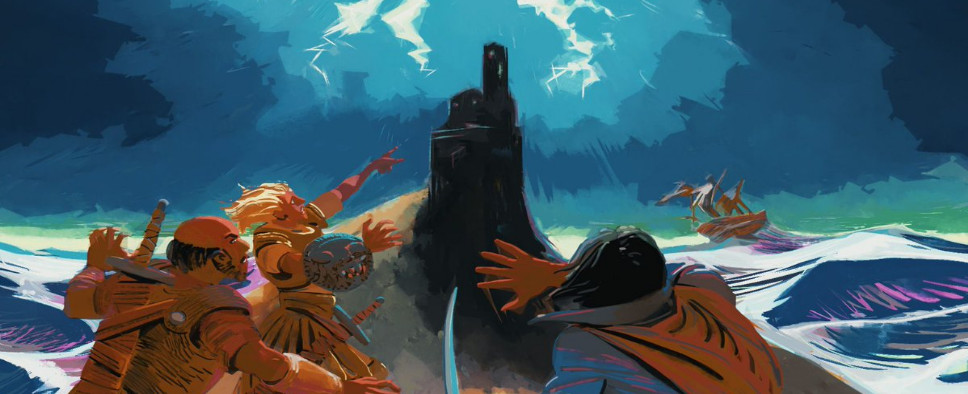SKALD: Against the Black Priory Preview
-
Category: PreviewsHits: 9819

Article Index
Introduction
I'm sure at some point we've all imagined that ideal RPG we would totally make, provided we had a little more spare time, a bit more money, and the skill set required to actually make things happen. For me, that top-down or isometric game would have to be party and turn-based and feature deep systems, plenty of areas to explore, secrets to uncover, and quests to undertake.
Imagine my surprise when Scape-IT's upcoming RPG SKALD: Against the Black Priory was revealed, and it was as close to that dream game of mine as you could possibly get. And it was being developed more or less by just one guy.
As such, it's in no way surprising that I followed the project's development with great interest and played its many early builds. And now that the game is about to launch into early access, I figured I should check out its free Prologue and see how it's shaping up and whether or not it can live up to the game I've constructed inside my head.
Putting Love, and Craft, in Lovecraft
First of all, I have to mention that in its current state, SKALD is already a game much greater than originally advertised. You see, it started its journey as just another retro RPG styled after the Ultimas of old. In fact, at some point, it was intended to be just a means of highlighting the toolset used to create it.
That is no longer the case. Right now, SKALD is looking to be a fully-featured RPG that just happens to use the retro aesthetic. Essentially, it's a game from the '90s made to look like a game from the '80s.
As such, you can expect a deep and engaging adventure where you have a grand quest, plenty of side activities, and a merry band of recruitable companions who occasionally interject during conversations. Oh yes, you can also expect to see actual branching dialogues and not some unfathomable keyword-driven monstrosity.
You'll have an overworld map with random encounters, and also expansive locations to explore, dungeons to delve into, and NPC hubs to pilfer for quests and supplies.
On top of it all, you'll get the very much appreciated and easy to parse character and inventory screens, a proper quest log, and even a screen that tracks your faction relations. But it's all stylized to look downright ancient.
And the best part here is that you can navigate all of this with your mouse, like a civilized person and not some savage smashing his keyboard with both hands and insisting that this is the correct way of doing things. Alternatively, you can also go the savage route, since early on, it was the intended way of playing the game.
And this highlights SKALD's evolution from an idea, to a crowdfunded project, and now to a mostly finished product. During its development, pretty much all of the game's systems were adjusted to become more player-friendly, but also more complex.
For example, early on, the game's combat resembled the original Wasteland or The Bard's Tale, where you gave orders to your team and then just waited for things to resolve. Only instead of a purely text-based experience, SKALD offered a visual representation for these battles.
But after a few pivots, the game's combat now is a proper turn-based affair, where you can move your characters across the battlefield, use various combat feats, and cast spells in a fashion similar to the Gold Box games, only with a more reasonable encounter rate and enemy numbers.
Plus, instead of teleporting you to some featureless arena every time you run into some foes, the combat now takes place directly on the game's map, which adds some variety and opens up plenty of new tactical opportunities.
And while a lot of the game is now driven by our modern sensibilities, at its core, it still manages to maintain its old-school charm. There's just something magical about seeing the combat log say, "Bob (22 HP) faces: Rabid Rat (6 HP). Bob is armed with Dagger. Target is out of range! Move forward or equip a ranged weapon!"
Beyond just that, as neat as the game's soundtrack and pixelated visuals are, its world would've felt a bit too barren and lifeless if not for all the descriptions you get while exploring. Step on a tile and you get a few words about some sickly flowers you're passing by or a damp cave you've stumbled into. It's in no way intrusive but it's ever-present and it just makes the world feel that much more alive.

